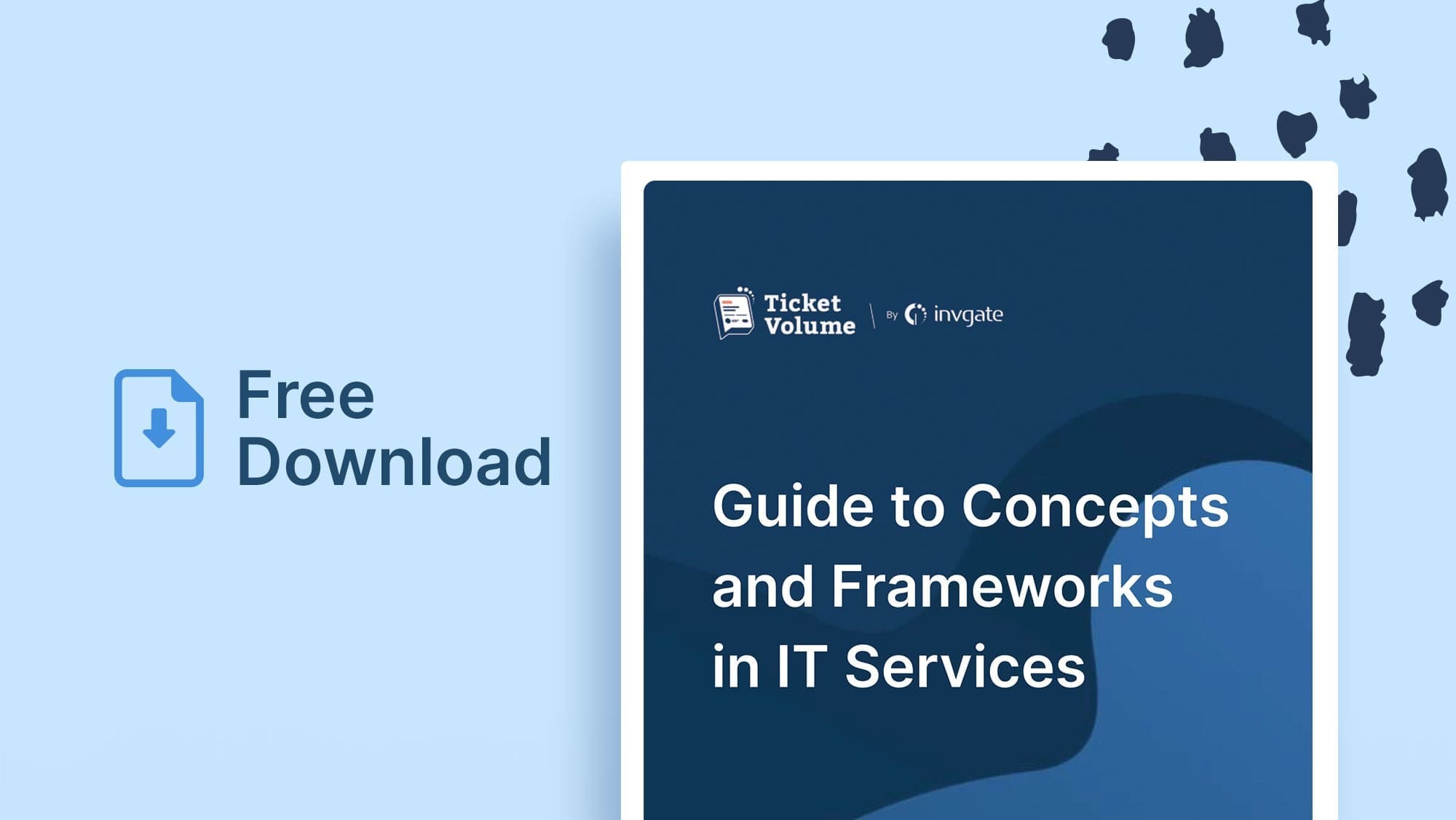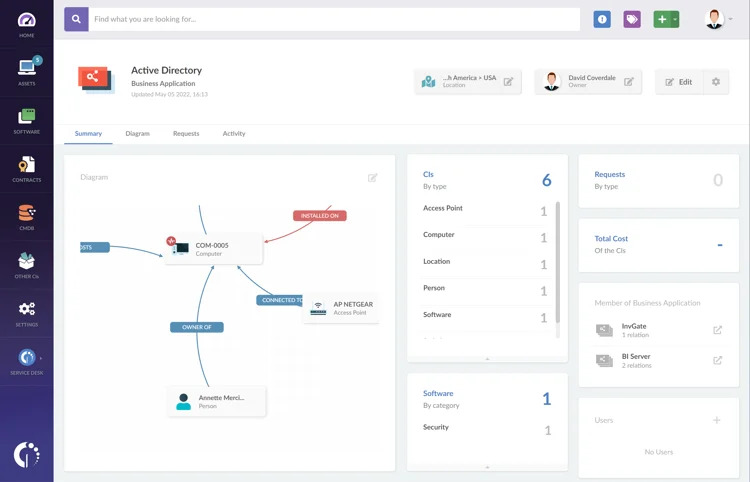Have you ever felt confused by the overlap of terms in the IT world? The truth is, it happens often and can get frustrating. But we're here for you. In this blog post, we’ll clarify the differences between IT Service Management (ITSM) and the Configuration Management Database (CMDB).
We'll start with a clear definition of each concept and highlight how they’re interconnected. Finally, we’ll explore how to make the most of this connection and the impact it can have on business outcomes.
Spoiler: We’ll share a case study on Smartmatic, a company dedicated to the administration and modernization of electoral processes, which fully understood the potential of this connection and the implementation of modern, effective tools.
What is ITSM?
IT Service Management is a comprehensive approach that encompasses the planning, delivery, management, and improvement of IT services within an organization. It focuses on aligning IT services with the needs of the business and ensuring that IT supports business objectives effectively.
ITSM encompasses various processes, including Incident Management, Problem Management, Change Management, and Service Request Management, all aimed at enhancing customer satisfaction and optimizing service delivery.
At its core, ITSM is about creating value for customers through effective Service Management practices. This involves not only delivering IT services but also continuously improving them based on feedback and changing business requirements.
By implementing ITSM frameworks, organizations can streamline their operations, reduce service costs, and improve overall efficiency.

What is Configuration Management Database (CMDB)?
A Configuration Management Database (CMDB) is a centralized repository that stores information about the Configuration Items (CIs) within an organization's IT infrastructure. CIs can include hardware, software, network components, and other critical assets that need to be managed to ensure effective service delivery.
The important thing to understand is that a CMDB exists within a larger structure, which is IT Asset Management, and its connection with ITSM is essential for the proper functioning of a company’s IT ecosystem. Within ITAM, the CMDB acts as a comprehensive visual map of these components, their relationships, and their configurations.
The CMDB is an integral part of ITAM, which refers to the processes involved in managing IT assets throughout their lifecycle. ITAM focuses on tracking and managing the financial, contractual, and inventory aspects of IT assets, ensuring that organizations maximize their value while minimizing risks.
By integrating ITAM with a CMDB, organizations can gain a holistic view of their IT environment, enabling better decision-making and risk management.
Why is Configuration Management Database (CMDB) important?
The importance of a CMDB cannot be overstated. It serves as the backbone of effective IT Service Management and Asset Management, providing organizations with several key benefits:
-
Enhanced visibility: A CMDB offers a comprehensive view of the IT infrastructure, enabling organizations to understand the relationships between various components. This visibility is crucial for effective decision-making and risk assessment.
-
Improved Incident Management: By providing detailed information about CIs and their interdependencies, a CMDB helps IT teams respond more effectively to incidents. Teams can quickly identify affected components and implement appropriate solutions, minimizing downtime.
-
Support for Change Management: The CMDB enables organizations to assess the impact of changes on the IT environment. By understanding how changes will affect various components, organizations can plan more effectively and reduce the risk of disruptions.
-
Facilitating root cause analysis: When incidents occur, the CMDB provides valuable data that can help teams perform root cause analysis. By understanding the relationships between CIs, teams can identify the source of issues more quickly and implement corrective actions.
-
Regulatory compliance: Maintaining accurate records of Configuration Items is essential for compliance with industry regulations. A CMDB helps organizations track changes and ensure that they can demonstrate compliance when required.

ITSM vs. CMDB: What’s the difference?
While ITSM and CMDB are interconnected, they serve different functions within an organization. Understanding these differences is crucial for effective IT Management.
1) Purpose and focus
- ITSM is primarily concerned with the overall management of IT services, focusing on delivering value to customers and improving service quality. It encompasses various processes that ensure IT services are aligned with business needs.
- CMDB, on the other hand, serves as a repository for configuration data, focusing on the relationships and dependencies between various CIs. It provides the necessary information to support ITSM processes, enabling organizations to manage their IT environment effectively.
2) Data Management
- In ITSM, data is used to inform Service Management processes, such as incident resolution and change management. ITSM tools leverage data from the CMDB to make informed decisions about service delivery.
- The CMDB stores detailed information about each CI, including attributes, relationships, and dependencies. This data is crucial for understanding how changes to one component can impact others, thereby supporting effective Incident and Change Management.
4) Integration with other processes
- ITSM integrates various processes, including incident management, problem management, and change management. It aims to create a seamless flow of information and collaboration among IT teams to enhance service delivery.
- The CMDB acts as a central repository that feeds data into these ITSM processes, ensuring that teams have access to accurate and up-to-date information when making decisions. This integration is essential for minimizing downtime and improving overall service quality.
5) Impact on business operations
- ITSM directly impacts customer satisfaction by ensuring that IT services meet business needs and expectations. By focusing on service quality, organizations can enhance their reputation and build stronger relationships with customers.
- The CMDB supports ITSM by providing visibility into the IT landscape, enabling organizations to assess risks, troubleshoot issues, and plan for changes effectively. This visibility is critical for maintaining service continuity and minimizing disruptions.
6) Role in Compliance and Risk Management
- ITSM processes often require compliance with industry standards and regulations. Effective ITSM practices help organizations demonstrate compliance and manage risks associated with service delivery.
- The CMDB plays a vital role in Compliance Management by tracking changes and maintaining accurate records of Configuration Items. This capability allows organizations to identify unauthorized changes, ensuring that they can respond promptly to potential security and regulatory risks.
5 benefits of having a CMDB as part of your ITSM strategy
This likely won’t come as a surprise: there are numerous benefits to having a CMDB as part of your ITSM strategy. And we have the perfect example to showcase this connection: Smartmatic case study.
Smartmatic succeeded in achieving concrete improvements with regard to visibility, efficiency, and decision-making upon the implementation of InvGate Service Management and InvGate Asset Management. This case study looks at how Smartmatic achieved smooth, proactive Incident Management, optimized resource utilization, and value-for-money operations owing to the implementation of the CMDB as part of the IT Service Management strategy.
1. Better visibility into IT Assets
A CMDB implemented as a part of your ITSM brings a level of visibility not possible with any other asset or the relationships between them. This would enable the IT team to understand how different pieces interact, reducing blind spots and allowing them to take a proactive approach toward managing the IT infrastructure.
This was the case in Smartmatic, in terms of implementing CMDB, allowing them to provide 14 diagrams showing the relation of the assets to each other. This kind of detailed mapping allowed them to gain real insights in reducing downtime since problems could be traced back to the root cause faster and more effectively.
2. Simplified workflows and processes
With a CMDB, workflows smoothen since processes are brought to a central point where information flows from the service desk function down to Asset Management functions without any hurdles. It cuts out redundancies and allows every member of your team access to the same accurate, updated information.
After the implementation of InvGate Service Management and InvGate Asset Management, Smartmatic saw impressive process improvements. They unified their ITSM and ITAM tools and were able to reduce operational costs and increase productivity so that "our team can answer incidents and service requests faster and more precisely".
3. Better decision-making
A well-managed CMDB aids in data-driven decision-making by providing consistent, centralized information about IT assets. It will help make better choices with regard to incident prioritization, upgrade planning, resource management, and many such activities, all of which align with organizational goals.
Centralized asset inventory made quite a bit of difference for decision-making at Smartmatic. With accurate and complete data in hand, they could plan actions according to their urgency and impact, align IT operations to better meet business needs, and, as a result, improve service delivery.
4. Proactive Incident Management
This integration of CMDB into ITSM allows for proactive Incident Management whereby teams can predict issues much earlier even before they become critical. With a wider knowledge of the dependencies of assets, IT teams are in better positions to make informed risk assessments and prevent incidents by addressing vulnerabilities early.
Smartmatic leveraged CMDB for the betterment of incident response. Since critical dependencies were identified and documented, they were able to go on the front foot to wipe out weak points in IT infrastructure and avoid unexpected incidents. As such, their IT was more resilient.
5. Cost savings and resource optimization
This helps in the avoidance of duplicated effort and the reduction in the use of numerous tools. Everything in one place ensures better utilization of resources and cuts down on waste in terms of duplicate tooling and inefficiency.
The consolidation brought in by the InvGate solution for Smartmatic meant lower operational costs by maximizing resource use. By lessening reliance on several platforms, resources were focused on where it mattered most: reduced overall cost with better performance.
Each of these benefits is indicative of how a CMDB in an ITSM strategy drives toward operational excellence-from better visibility to substantial cost savings. The case of Smartmatic provides evidence toward that integration and hence gives a practical perspective on tangible gains that organizations should expect.
y.
Read the full success storyDiscover how Smartmatic streamlined its operations with InvGate. |
Asset Management software solutions
Organizations need robust IT Asset Management solutions to manage their IT assets effectively. They provide the tools necessary to track, manage, and optimize IT assets throughout their lifecycle.
These solutions often integrate with a CMDB to provide a holistic view of the IT landscape. By combining Asset Management with Configuration Management, organizations can ensure that they have accurate and up-to-date information about their IT assets and their relationships.
Introducing InvGate Asset Management
InvGate Asset Management is a powerful IT Asset Management solution that helps organizations manage their IT assets effectively. With its user-friendly interface and robust features, InvGate Asset Managements simplifies the process of tracking and managing assets, enabling IT teams to focus on delivering value to the business.
One of the standout features of InvGate Asset Managements is its integration with a CMDB. This integration allows organizations to maintain a centralized repository of configuration data, ensuring that they have access to accurate information when making decisions. By leveraging InvGate Asset Managements, organizations can enhance their Asset Management processes and improve overall service delivery.

Plus, it natively integrates with the ITSM solution InvGate Service Management. This ensures that all configuration item-related data and the CMDB is accurate and up-to-date, facilitating efficient Incident, Problem, and Change Management, and thereby improving overall ITSM and compliance.
How can InvGate Asset Management help?
InvGate Asset Managements offers several key benefits that make it an essential tool for organizations looking to optimize their Asset Management processes:
-
Centralized repository: By maintaining a centralized repository of configuration data, InvGate Asset Managements ensures that IT teams have access to accurate and up-to-date information about their assets and their relationships.
-
Improved visibility: The software provides a comprehensive view of the IT landscape, enabling organizations to understand the interdependencies between various components. This visibility is crucial for effective decision-making and risk assessment.
-
Streamlined Incident Management: With detailed information about Configuration Items, and through its integration with the service desk, InvGate Asset Management helps IT teams respond more effectively to incidents. Teams can quickly identify affected components and implement solutions, minimizing downtime.
-
Enhanced Change Management: The integration with a CMDB allows organizations to assess the impact of changes on the IT environment. By understanding how changes will affect various components, organizations can plan more effectively and reduce the risk of disruptions.
To sum up
In conclusion, understanding the differences between ITSM and CMDB is essential for effective IT Management. While ITSM focuses on delivering value through Service Management processes, the CMDB serves as a centralized repository of configuration data that supports these processes.
By leveraging a CMDB, organizations can enhance their visibility into the IT landscape, improve incident and change management, and ensure compliance with industry regulations.
As organizations continue to evolve in the digital age, the importance of effective IT Asset Management and service delivery cannot be overstated. By integrating ITSM with a robust CMDB, organizations can optimize their IT operations and drive business success.
Frequently Asked Questions
1. What is the main purpose of ITSM?
ITSM focuses on the planning, delivery, management, and improvement of IT services within an organization, ensuring that IT supports business objectives effectively.
2. How does a CMDB support ITSM processes?
A CMDB provides a centralized repository of configuration data that informs ITSM processes, enabling organizations to manage their IT environment effectively and make informed decisions.
3. Why is a CMDB important for organizations?
A CMDB enhances visibility into the IT infrastructure, improves incident and change management, facilitates root cause analysis, and supports regulatory compliance.
















